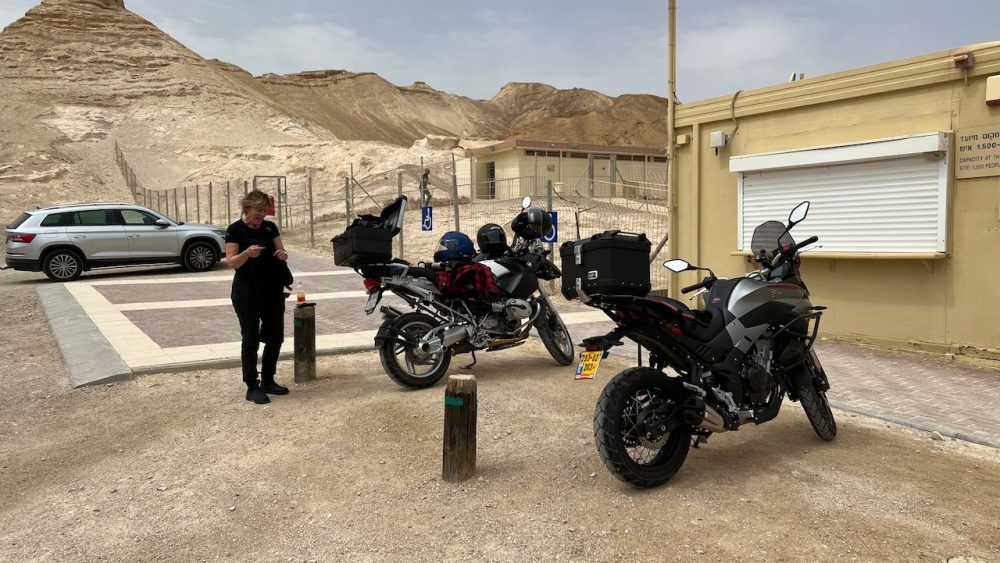For seven weeks in the spring of 2023, Karin (Zetterholm) and I had the privilege of serving as scholars in residence at STI within the framework of the so-called Mörthen project. We left a rainy and cold Lund on February 9 and arrived in an almost equally cold and rainy Jerusalem. I have been to Jerusalem many times but never this early in the year so freezing in the holy city was a new and unusual experience. Fortunately, the apartment that STI rented for us had an excellent air heating system.
Unlike Svante Lundgren, the first scholar in residence in the Mörthen project, we did not stay at the Albright Institute of Archaeological Research, but in an apartment on Ben Yehuda Street in central Jerusalem. This had definite advantages – STI is only a 5-minute walk away – but also some disadvantages, as Ben Yehuda Street is the most popular pedestrian street in Jerusalem. The description of the apartment as “a quiet rooftop apartment” turned out to be not entirely accurate. One could say that the Ben Yehuda Street pretty much reflects the soul of Jerusalem. Here, ultra-orthodox Jews mingle with tourists from all over the world, Christian pilgrims, Arab-Israeli businessmen, street musicians, preachers, the occasional madman, and at night, singing crowds of generally happy and (very) loud people. The Sabbath, which I might otherwise have considered mostly an inconvenience, with buses and trams not running and most shops and restaurants closed, came as a definite relief.
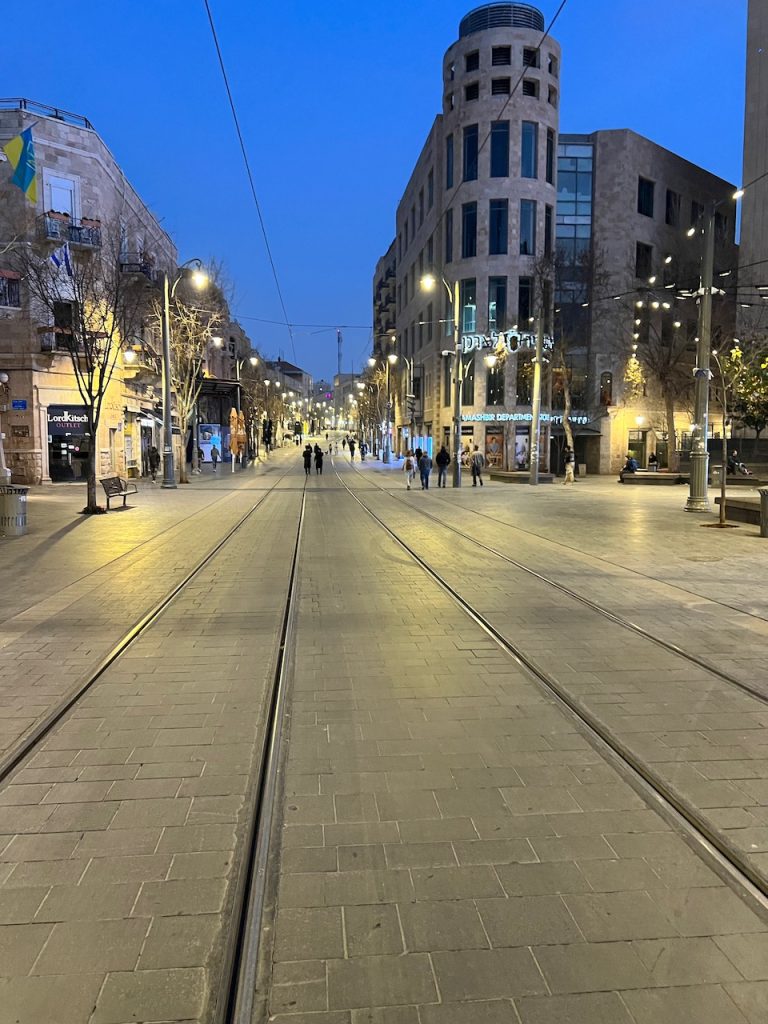
We worked mainly in STI’s library and thus had the opportunity to participate in the daily activities of the institute. Our task in Jerusalem included writing a major research proposal and much of the time was spent reading articles and trying to identify a research task that could be carried out by three to four researchers over a three-year period. In addition, we started writing on a book on the Jewish roots of Christianity, Christian origins and development during the first four centuries – a book that will summarize our research from the last twenty years.
Our stay at STI partly coincided with the international course held there each year with participants from all over the world and we had the privilege to interact with the course participants through a joint lecture on some of the recent trends in research on Paul and Jesus. At the end of March, Karin was invited to Professor Maren Niehoff’s (one of Karin’s former teachers) research seminar at the Hebrew University to present her current research project. Karin thought it was a pleasant experience to return to the place where she studied for a couple of years during the 90’s, but now as an internationally recognized scholar. After a fruitful discussion, we were able to discuss at lunch possible forms of cooperation, such as joint research seminars facilitated by digital technology.
We were also fortunate to meet several colleagues. Bill Campbell and Kathy Ehrensperger were visiting Jerusalem and we met them at STI, showed them the beautiful building and had the opportunity to tell them about the history of STI and the reason it was founded. We met our honorary doctor from 2017, Professor Paula Fredriksen, on a couple of occasions for fruitful discussions. Together with CTR’s PhD student, Daniel Leviathan, we met with Professors Rina Talgam and Yakir Paz on one occasion and one of the experts on modern synagogue architecture, Professor Vladimir Levin, on another. There are rich opportunities for various forms of future collaboration.
Together with CTR’s Andreas Westergren, we made a much-appreciated study trip to Jordan (a country that seems to have no traffic rules at all) where we visited ancient churches, Roman ruins, some synagogues and a variety of magnificent mosaics in Gadara (where I met a pack of quite decent dogs), Jarash, Madaba and Umm ar-Rasas.
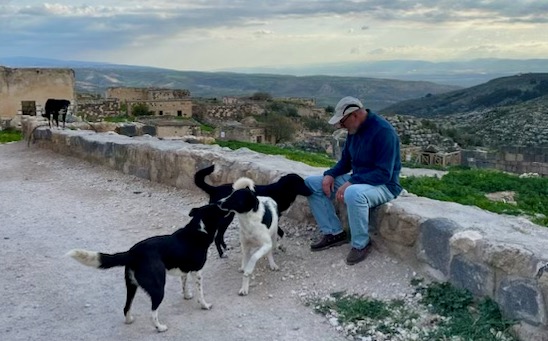
It was very interesting to explore and discuss the architecture of ancient churches together with a skilled church historian. It was not least exciting to be reminded in a very tangible way that “cancel culture” has very old roots. Note how effectively human images have been erased from the mosaic floor of a church in Umm ar-Rasas.
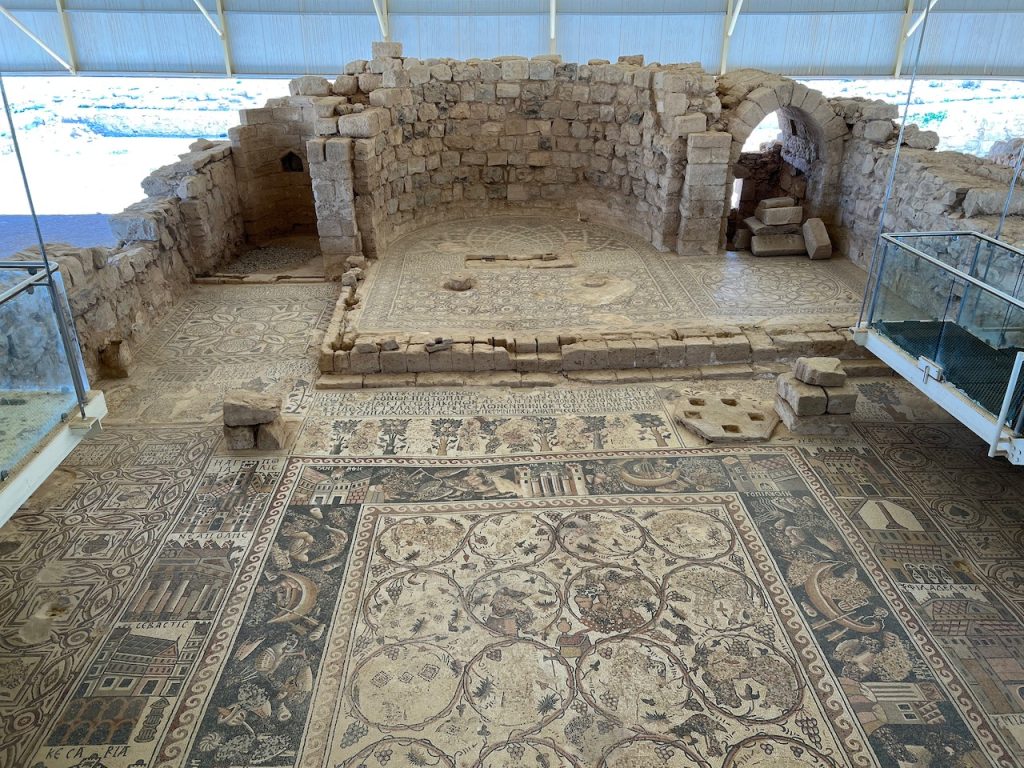
The weather in Israel can be a bit unreliable temperature-wise in the spring. We had many nice days with temperatures above 20 degrees and one such day I finally got the opportunity to visit Masada, together with STI’s Jonny Nilsson and this year’s volunteer Maria Måneskär.
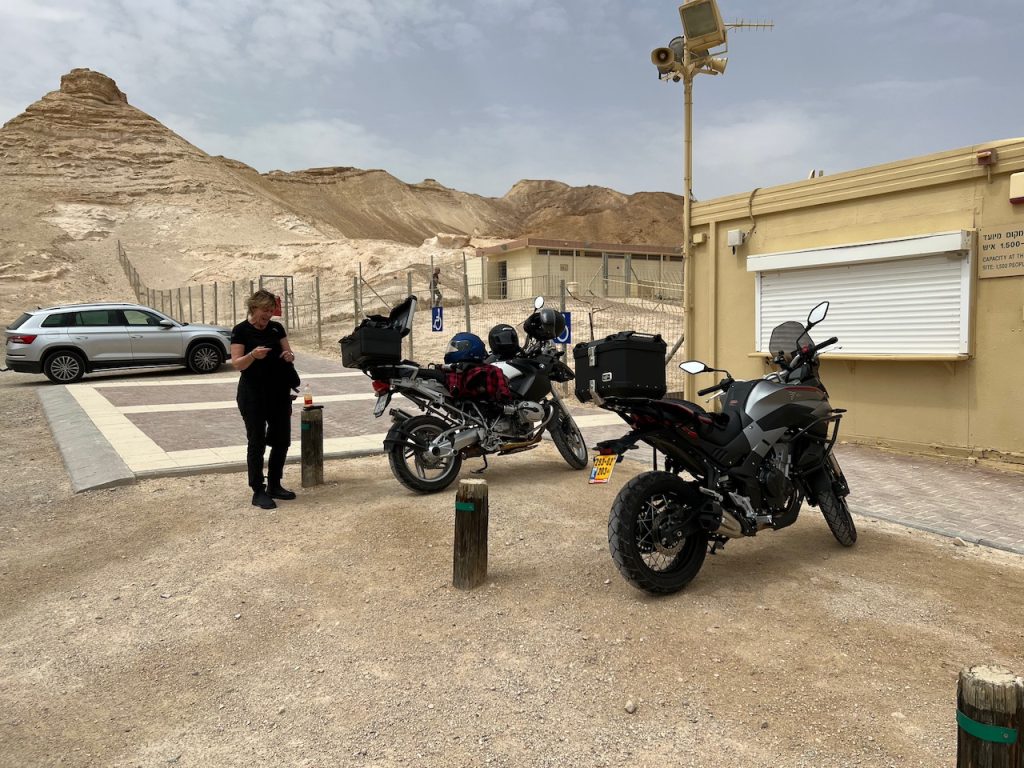
But the weather changes, so on March 30, we returned to Sweden under the same weather circumstances as when we arrived, actually even worse, whipping rain and biting wind. All in all, we must conclude that the stay was successful – we have revived old contacts, made some new ones, learned some new things and seen some places we had not seen before, something that may enrich future teaching.
Magnus Zetterholm

